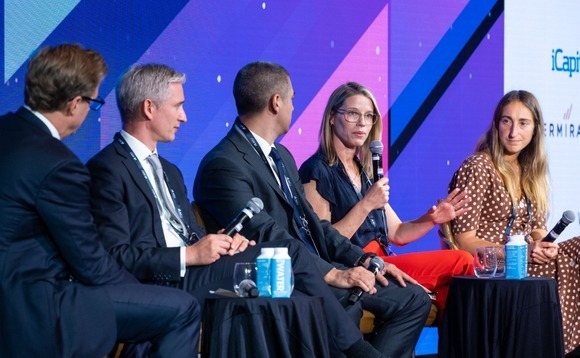
Australian LPs get tough on unlisted valuations - AVCJ Forum

Australian LPs are facing more scrutiny as to how they value unlisted assets, prompting several superannuation funds to establish independent valuation teams that operate separately from private equity investment professionals.
"While we are closest to our GPs and are involved in overseeing and approving valuations with LPACs [LP advisory committees], we can be conflicted. With some of our incentives and arrangements, it's helpful when private equity valuations are healthy," Jenny Newmarch, a senior portfolio manager and head of private equity at Aware Super, told the AVCJ Australia & New Zealand Forum.
Aware hired a private equity valuations specialist last year who reports directly to the CFO and is responsible for reviewing valuation policies and recommending changes. Newmarch added that the superfund's mark-to-market PE valuations have been more effective in the current cycle, capturing 70% of the equity market downside. In previous cycles, it has been 40%-60%.
Private equity accounts for AUD 9bn (USD 5.9bn) out of Aware's AUD 150bn in total assets and it looks to deploy around AUD 2bn in the asset class every year. Taking a more disciplined approach to valuation means the superfund should be able to maintain a consistent pace of deployment when volatile markets might otherwise cause liquidity crises, Newmarch said.
Australian Retirement Trust (ART) convenes its valuation committee to assess valuations of unlisted assets when movements in listed markets cross set thresholds. The valuation of the entire private equity portfolio was adjusted downwards for the 12 months to June 2022.
"We are very focused on it, we know APRA [Australian Prudential Regulatory Authority] is focused on it, there is increased scrutiny internally. But we are still comfortable with our private equity valuations. When stuff sells, it is still selling at a premium to the holding values," said James Lilico, a senior portfolio manager at ART.
He noted that more than 80% of the private equity portfolio – currently AUD 14bn out of AUD 240bn in total assets – is in buyouts, so there is less exposure to the venture capital-style, high loss-making companies "that might have been accused of having inflated valuations over the last year."
Those concerns came to the fore in 2022 when APRA questioned several superfunds about their approach to valuing Canva, an Australian design services marketplace backed by numerous local venture capital firms. The company was valued at USD 40bn in 2021 but some investors subsequently disclosed sizeable markdowns.
Rick Baker, co-founder of Blackbird Ventures and an investor in Canva, recently told AVCJ that the firm had adopted a new valuation methodology for its largest positions. An independent third party assesses valuations based on the most recent funding round, any secondary transactions involving the assets, and comparable listed companies.
"We came into this from more than a decade of growing asset prices. In that context, our policy of holding at the prior round valuation is conservative. It tends to be lower than the mark-to-market because the market is rising. However, when the market comes down, those valuations get stale very quickly, and this was the problem the superfunds highlighted," Baker said.
Despite valuation adjustments across the private markets spectrum, investors are still wary. Marina Pasika, head of private equity at Rest Super, which has AUD 70bn in assets, a relatively nascent PE programme, and a newly installed independent valuation committee, observed that valuations "still feel high compared to the listed markets."
Aware is being highly selective in its investments, with Newmarch questioning the widely voiced opinion that the current post-boom vintage should be a strong one.
A company might be available at a 20% discount to the price 12 months ago, and all other things being equal, that should translate into a better return. However, it is possible that the valuation premium to comparable listed companies has widened. Superfunds, which often measure their PE performance relative to listed markets, not on an absolute basis, would not be impressed.
In addition, Newmarch said that Aware – like many of its peers – has a private equity portfolio comprising assets largely accumulated at what now appears to be the top of the market. If there is an expectation that returns on these assets will be lower than anticipated, new investments must cover the shortfall.
"We are looking at new capital with a different lens," she said. "The bar is higher because these are the investments that are really going to carry the portfolio in the near term."
Latest News
Asian GPs slow implementation of ESG policies - survey
Asia-based private equity firms are assigning more dedicated resources to environment, social, and governance (ESG) programmes, but policy changes have slowed in the past 12 months, in part due to concerns raised internally and by LPs, according to a...
Singapore fintech start-up LXA gets $10m seed round
New Enterprise Associates (NEA) has led a USD 10m seed round for Singapore’s LXA, a financial technology start-up launched by a former Asia senior executive at The Blackstone Group.
India's InCred announces $60m round, claims unicorn status
Indian non-bank lender InCred Financial Services said it has received INR 5bn (USD 60m) at a valuation of at least USD 1bn from unnamed investors including “a global private equity fund.”
Insight leads $50m round for Australia's Roller
Insight Partners has led a USD 50m round for Australia’s Roller, a venue management software provider specializing in family fun parks.







